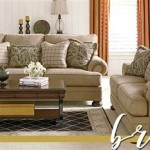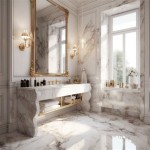Inside Home Decor Ideas: Elevating Your Living Space
Home decor is the art of creating an aesthetically pleasing and functional living environment. It involves selecting and arranging items within the home, such as furniture, accessories, and color schemes, to reflect the homeowner's personal style and enhance the overall atmosphere. A well-decorated home can improve mood, increase productivity, and create a welcoming space for family and guests. This article explores key concepts and ideas for transforming a house into a personalized and inviting home.
Understanding the Fundamentals of Interior Design
Before embarking on a home decorating project, understanding the foundational principles of interior design is crucial. These principles serve as guidelines for creating harmonious and balanced spaces. Key elements include space, line, form, light, color, texture, and pattern. Mastering these elements allows for intentional and effective decorating decisions.
Space refers to the physical area within a room. Efficient space planning involves arranging furniture and accessories to maximize usability and flow. Negative space, or the empty areas around objects, is equally important as it contributes to a sense of openness and reduces clutter.
Line creates form and direction within a room. Horizontal lines can evoke feelings of stability and calmness, while vertical lines suggest height and formality. Diagonal lines can introduce dynamism and visual interest. The strategic use of lines can guide the eye and define different zones within a space.
Form refers to the shape and outlines of objects. Furniture and accessories come in various forms, from geometric to organic. Balancing different forms creates visual harmony. Consider the scale of furniture in relation to the room size; oversized pieces can overwhelm a small space, while undersized pieces may appear insignificant in a large room.
Light is essential for both functionality and ambience. Natural light should be maximized whenever possible, with windows left unobstructed or covered with sheer curtains. Artificial lighting, including ambient, task, and accent lighting, can be layered to create a well-lit and inviting space. Ambient lighting provides overall illumination, task lighting focuses on specific activities, and accent lighting highlights focal points.
Color is a powerful tool for evoking emotions and creating a desired mood. Color palettes should be carefully considered based on the room's function and the homeowner's preferences. Warm colors, such as reds, oranges, and yellows, can create a sense of energy and warmth, while cool colors, such as blues, greens, and purples, can promote relaxation and tranquility. Neutral colors, such as whites, grays, and beiges, offer a versatile backdrop for adding pops of color through accessories.
Texture adds depth and visual interest to a room. Incorporating a variety of textures, such as smooth, rough, soft, and hard, can create a more engaging and tactile environment. Texture can be introduced through furniture fabrics, wall coverings, flooring, and decorative accessories.
Pattern can add personality and visual interest to a space. Patterns can be incorporated through fabrics, wallpapers, rugs, and accessories. When using patterns, it is important to balance them with solid colors to avoid overwhelming the space. Mixing and matching patterns can be effective, but it requires careful consideration of scale, color, and style.
Curating a Cohesive Style
Developing a cohesive style is essential for creating a unified and harmonious home environment. Style can be defined as a specific aesthetic that reflects personal taste and preferences. Common interior design styles include modern, minimalist, traditional, bohemian, and eclectic.
Modern design emphasizes clean lines, functionality, and simplicity. It often incorporates neutral colors, natural materials, and open floor plans. Furniture typically features sleek silhouettes and minimal ornamentation. The focus is on creating a streamlined and uncluttered space.
Minimalist design takes modern principles to the extreme, focusing on utmost simplicity and functionality. It minimizes clutter and ornamentation, emphasizing the essential elements. Color palettes are typically monochromatic, with an emphasis on white, gray, and black. Furniture is carefully selected for its functionality and aesthetic appeal, with a focus on quality over quantity.
Traditional design evokes a sense of timeless elegance and formality. It often incorporates rich colors, ornate details, and classic furniture styles. Fabrics such as velvet, silk, and brocade are commonly used. Traditional design emphasizes symmetry and balance, creating a comfortable and inviting atmosphere.
Bohemian design celebrates individuality, creativity, and a relaxed lifestyle. It often incorporates eclectic patterns, vibrant colors, and natural textures. Furniture may be a mix of vintage and modern pieces. Bohemian design emphasizes personal expression and creating a comfortable and unconventional space.
Eclectic design blends different styles and periods, creating a unique and personalized look. It requires a careful eye for balance and harmony. An eclectic space might incorporate vintage furniture, modern art, and global-inspired accessories. The key is to create a cohesive look by unifying the different elements through color, texture, or theme.
Identifying your personal style is the first step in creating a cohesive home decor scheme. Gathering inspiration from magazines, websites, and social media can help refine your taste and identify recurring themes. Create a mood board to visualize your ideas and ensure that the different elements work together harmoniously.
Incorporating Key Decor Elements
Once a style has been chosen and the foundational principles of interior design understood, specific decor elements can be selected and incorporated to enhance the overall aesthetic. These elements include furniture, window treatments, art and accessories, and flooring.
Furniture is the backbone of any room. When selecting furniture, consider both functionality and style. Choose pieces that are comfortable, durable, and visually appealing. Pay attention to scale and proportion to ensure that furniture fits comfortably within the space. Consider the flow of traffic and arrange furniture to maximize usability and create a welcoming atmosphere. Invest in quality pieces that will stand the test of time.
Window treatments play a crucial role in controlling light, providing privacy, and adding visual interest to a room. Options include curtains, blinds, shades, and shutters. The choice of window treatment will depend on the room's function, the desired level of light control, and the overall style of the space. Curtains can add softness and elegance, while blinds and shades offer a more streamlined and contemporary look. Layering different types of window treatments can create a more sophisticated and functional solution.
Art and accessories add personality and character to a home. Choose art that resonates with you and reflects your personal taste. Accessories can include decorative pillows, throws, vases, sculptures, and plants. These items can add color, texture, and visual interest to a room. Avoid clutter and focus on selecting a few well-chosen pieces that complement the overall design scheme. Grouping accessories together can create a more impactful display.
Flooring is a fundamental element of any room and should be chosen carefully. Options include hardwood, carpet, tile, laminate, and vinyl. The choice of flooring will depend on the room's function, the desired aesthetic, and the budget. Hardwood flooring is a classic and durable option, while carpet adds warmth and comfort. Tile is a practical choice for bathrooms and kitchens. Consider the color and texture of the flooring to ensure that it complements the overall design scheme. Area rugs can be used to define different zones within a room and add color and texture.
Beyond these key elements, smaller details can also contribute to a cohesive home decor scheme. Consider the hardware on doors and cabinets, the lighting fixtures, and the paint color on the walls. These small details can have a significant impact on the overall look and feel of a space. Consistency in these details can enhance the sense of cohesion and create a more polished and professional look.
Implementing these ideas requires a thoughtful approach. Consider how the space will be used and who will be using it. Prioritize functionality and comfort, while also paying attention to aesthetics. Don't be afraid to experiment and personalize the space to reflect your unique style and preferences. Home decor is an ongoing process, and changes can be made over time as your tastes and needs evolve.

Livingroom Ideas Decor Decorating Id Contemporary Living Room Luxury House Designs Open

Home Interior Design Ideas Blog Designcafe

10 N Interior Design Tips To Add Some Desi Drama Your Home

77 Best Living Room Decor Ideas 2025 Unique

Mansion Interior Design Ideas For Your Home Designcafe

How To Design A Room Like An Interior Designer Step By Greenhouse Studio

100 Home Decor Ideas The Ultimate Inspiration For Interior Designers

5 Amazing Modern House Design Ideas You Must See Livspace

Home Decor Ideas Expert Shares Interior Design Tips For Beginners Hindustan Times

45 Irresistibly Stylish Midcentury Modern Living Room Idea







